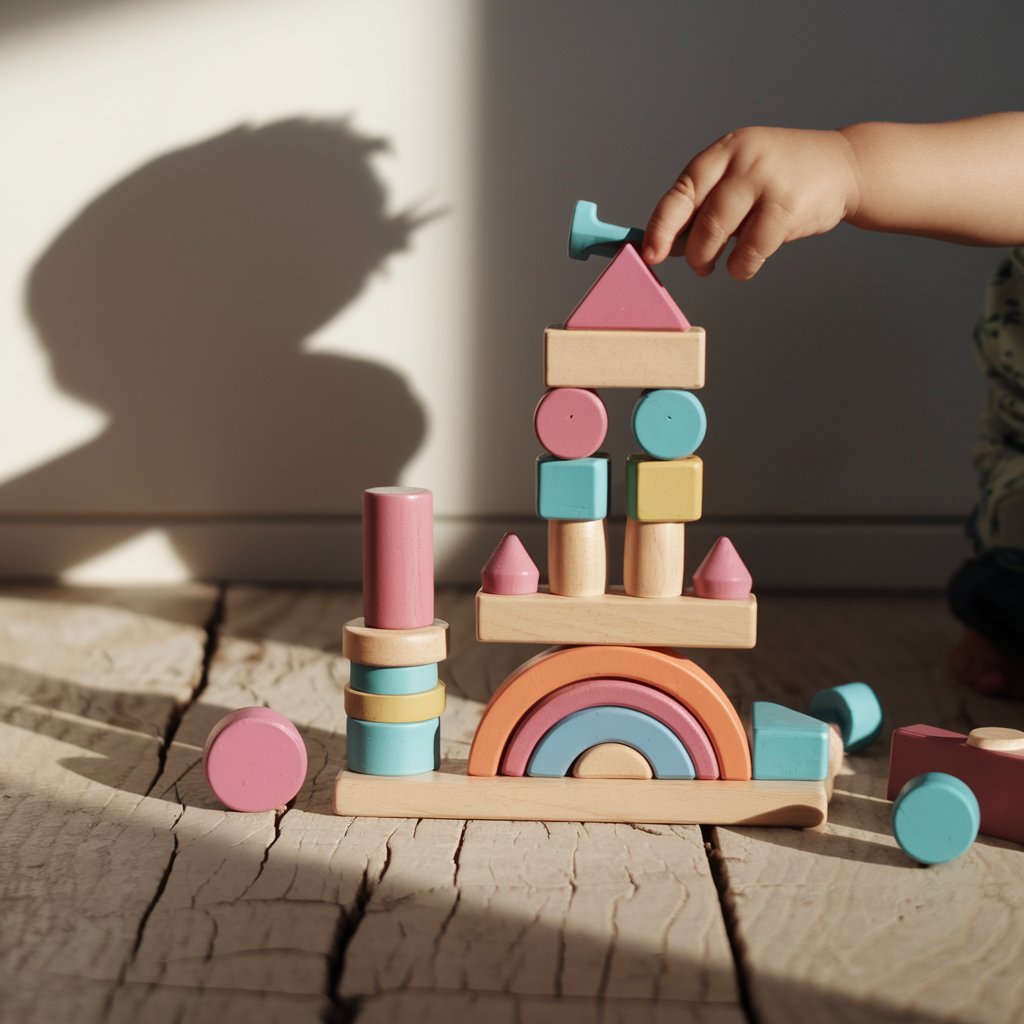In today’s world, the concern about the excessive amount of time children spend in front of screens is growing among parents. Studies show that overuse of electronic devices can impact children’s social, emotional, and cognitive development. In this scenario, wooden toys emerge as a natural and healthy solution to encourage more creative and active play, helping to reduce screen time. In this article, we’ll explore how wooden toys can be an ally for parents in reducing dependence on electronic devices and promoting children’s overall development.

1. Stimulating Creativity and Imagination
Unlike video games and other digital entertainment, which often provide predetermined and limited stimuli, wooden toys encourage children to use their imagination. Whether building a city with wooden blocks or creating stories with wooden dolls and vehicles, these toys allow children to invent their own fantasy world.
Why it helps:
- When children are immersed in creative play, they are less inclined to seek out electronic devices for entertainment, naturally reducing screen time.
2. Simple and Engaging Play
Wooden toys are often simpler and more tactile, yet they provide deep engagement. The natural texture of wood and the physical way these toys can be manipulated create a rich sensory experience that holds a child’s attention for extended periods.
Direct benefit:
- With toys that captivate and keep the child engaged, the need to turn to screens for amusement decreases significantly.
3. Social Interaction and Cooperation
Wooden toys, such as building blocks, cars, and puzzles, often encourage group play, fostering social interaction. When children play together, they develop important skills like cooperation, negotiation, and problem-solving, abilities that are often lost in the digital world.
Why it’s important:
- Cooperative play offers opportunities to reduce screen time, as children are occupied with activities that require engagement with others rather than with electronic devices.
4. Development of Motor Skills
Many wooden toys require children to actively use their hands, which helps develop fine and gross motor skills. Building, stacking, and manipulating wooden pieces demand coordination and precision, providing an appealing alternative to the passive activities associated with screen time.
How it helps:
- By offering opportunities to develop motor skills, wooden toys keep children physically active and less likely to spend idle time in front of a screen.
5. Creating Screen-Free Routines
Introducing wooden toys into a child’s daily routine can be an effective way to create moments of screen-free play. Parents can establish designated playtimes without technology, encouraging the use of toys that promote physical and mental interaction.
Impact on routine:
- The more wooden toys are incorporated into daily life, the more children develop the habit of playing away from screens, directly impacting the reduction of screen time.
Conclusion
Wooden toys offer a valuable and healthy alternative to help reduce children’s screen time. They encourage the development of imagination, creativity, and social skills while promoting more engaging and active play. With these toys, children have the opportunity to connect with simpler yet enriching forms of play that do not rely on technology.
By introducing more wooden toys into everyday life, parents can create an environment that supports the overall development of their children, helping to balance screen time and encouraging a more active and healthy childhood.
